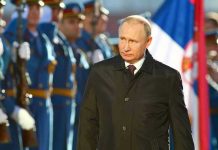
The claim that $100,000 is the new poverty line is sparking debate, highlighting the inadequacy of current measures in high-cost areas.
Story Snapshot
- The official U.S. poverty line is $32,150 for a family of four in 2025.
- Media and think tanks suggest a $100,000 income may still lead to hardship in expensive cities.
- The Supplemental Poverty Measure (SPM) accounts for regional costs but doesn’t reach $100,000.
- Advocacy groups call for updated measures that reflect modern expenses.
Understanding the $100,000 Debate
The debate over whether $100,000 represents a new poverty line in the U.S. is rooted in regional economic disparities. While the official poverty line for a family of four stands at $32,150 in 2025, some media outlets and think tanks argue that this figure does not capture the realities faced by families in high-cost urban areas.
In cities like San Francisco and New York, basic living expenses can far outpace national averages, leading to calls for measures that better reflect these challenges.
The Supplemental Poverty Measure (SPM), introduced in 2011, offers a more nuanced approach by including non-cash benefits and adjusting for local housing costs. However, even this improved measure falls short of the $100,000 threshold posited by certain commentators.
The idea of using $100,000 as a poverty benchmark is not supported by official data but serves to highlight the economic struggles of middle-income families in high-cost areas.
Key Stakeholders and Their Roles
The U.S. Census Bureau and the Department of Health and Human Services (HHS) are central to setting the official poverty lines and guidelines used for program eligibility. Think tanks and policy institutes like the Urban Institute and Brookings provide critical analysis and critique of these measures.
Meanwhile, media outlets play a significant role in amplifying public debates, often highlighting stories of families struggling even on higher incomes.
Advocacy groups and some policymakers are pushing for poverty measures that take into account the real cost of living in various regions. They argue that the current poverty line does not accurately reflect economic insecurity in metropolitan areas, where housing, healthcare, and childcare costs far exceed national averages.
Potential Impacts and Future Directions
The current debate over poverty measurement has several potential implications. In the short term, it raises public awareness about the inadequacy of the official poverty line in high-cost areas. This could lead to increased political pressure to reform how poverty is measured and who is eligible for assistance.
In the long term, we might see policy changes that incorporate more nuanced or regionally adjusted poverty measures, expanding eligibility for social programs in expensive regions.
The economic implications of underestimating hardship are significant, potentially limiting access to necessary assistance for families who fall between the current poverty line and the proposed $100,000 threshold.
Socially, this creates increased stress and insecurity among those who earn well above the official poverty line but still struggle to make ends meet. Politically, the debate intensifies discussions about the adequacy of social safety nets and income inequality.
Sources:
Nasdaq, “This Income Is Considered Poverty Level in 2025”
U.S. Census Bureau, “Poverty in the United States: 2024”
U.S. Department of Health and Human Services, 2025 Poverty Guidelines

















